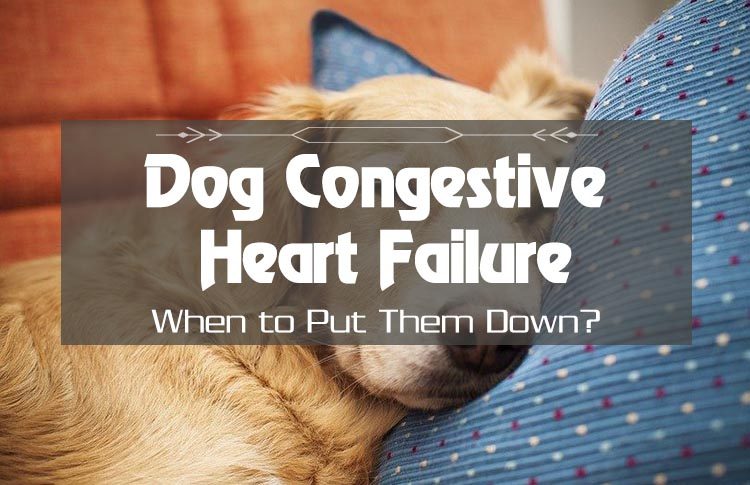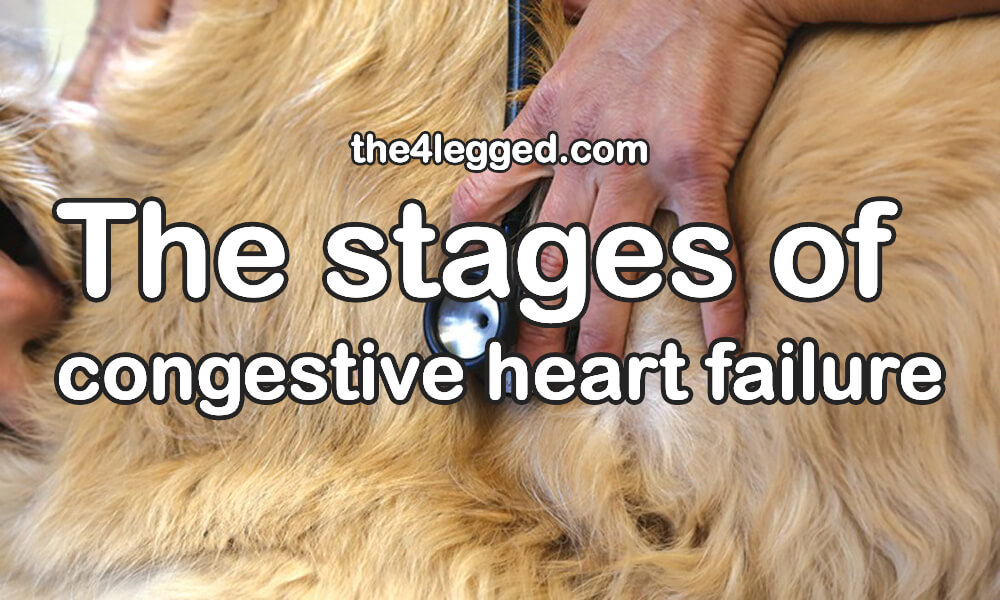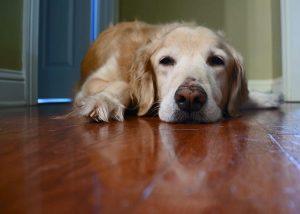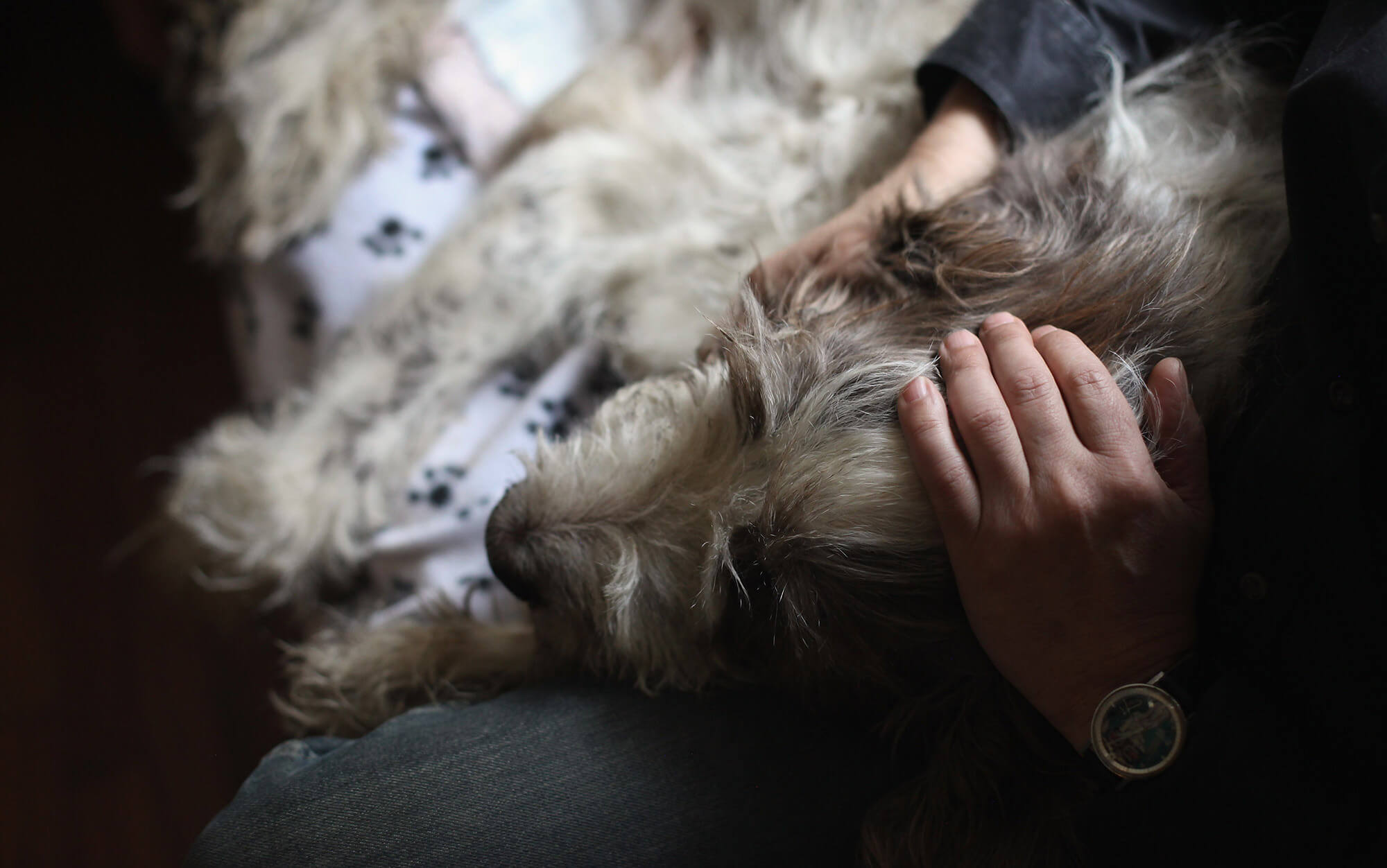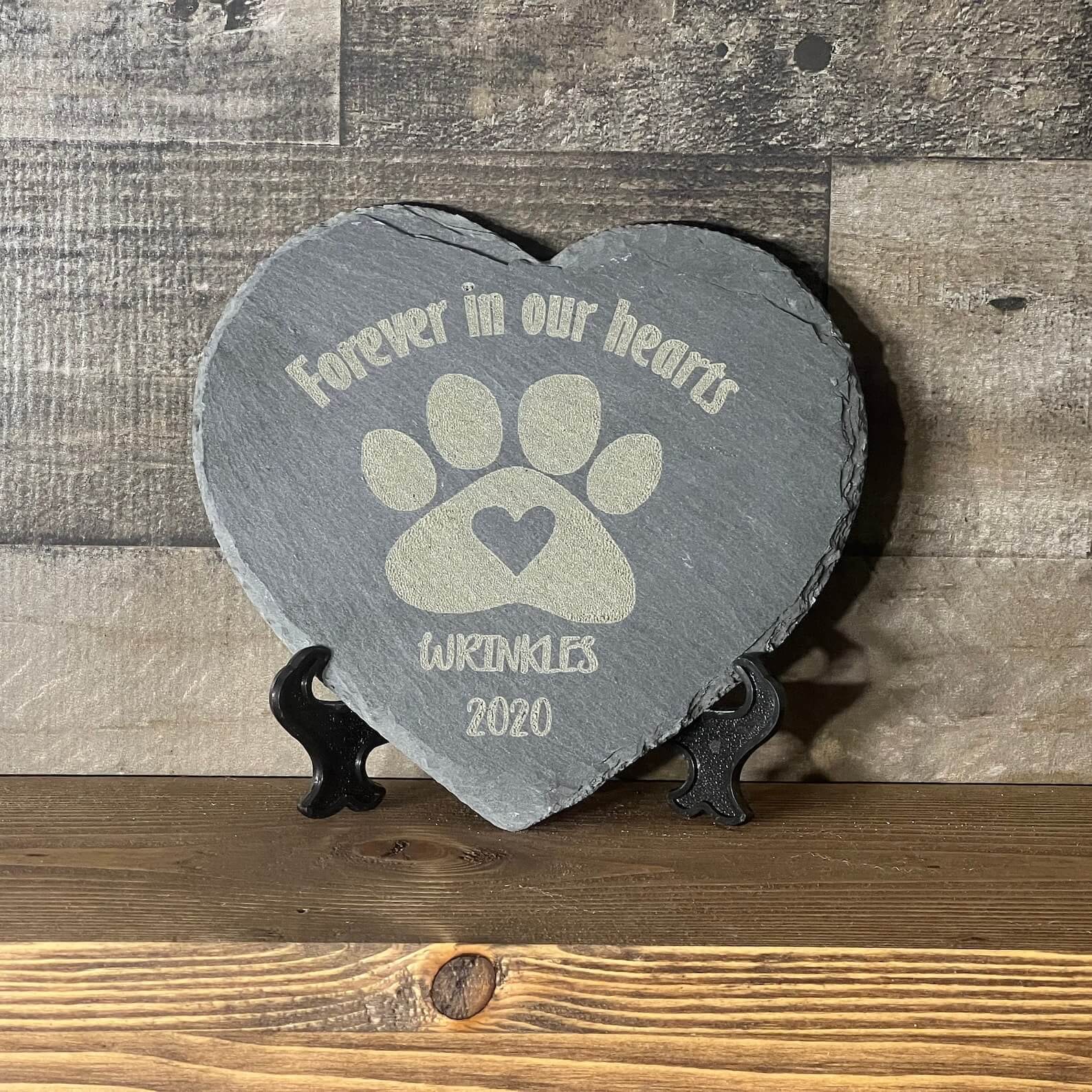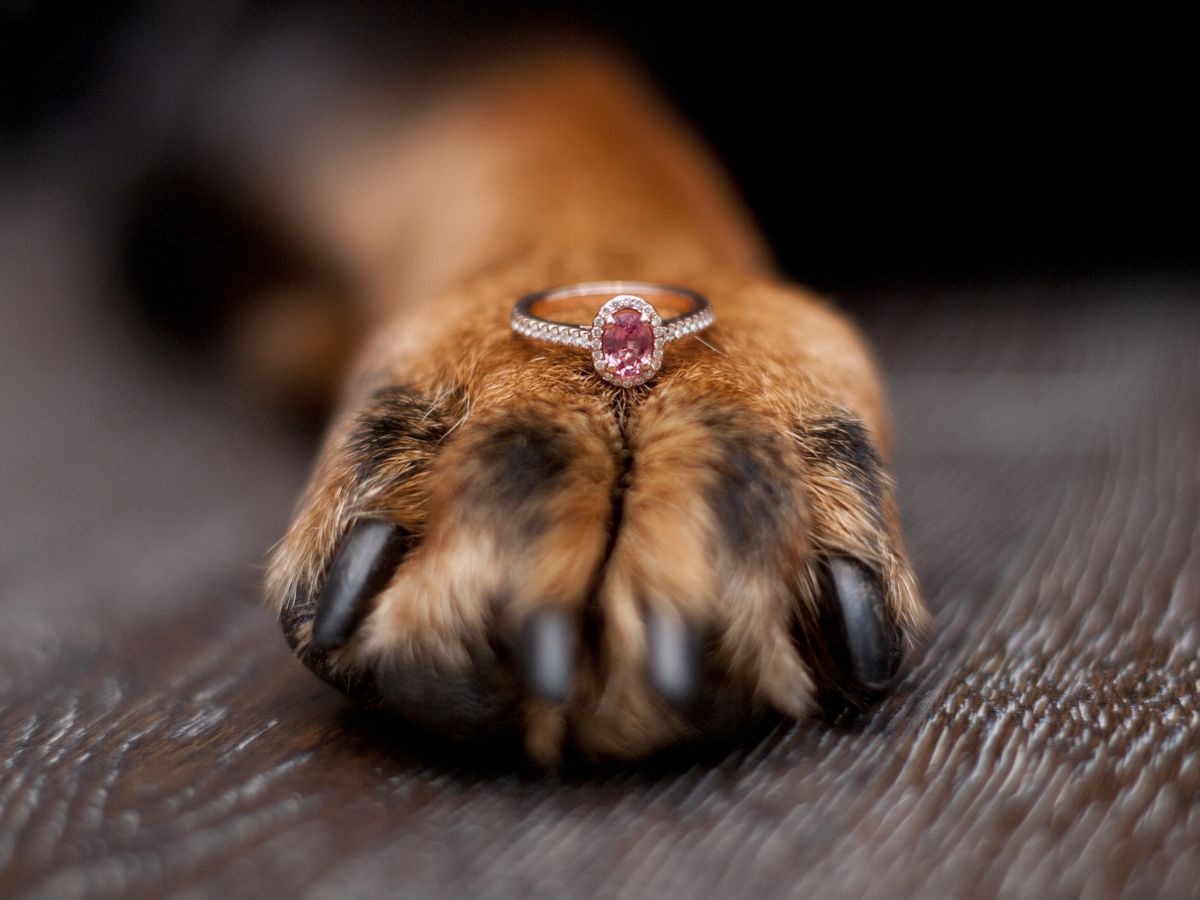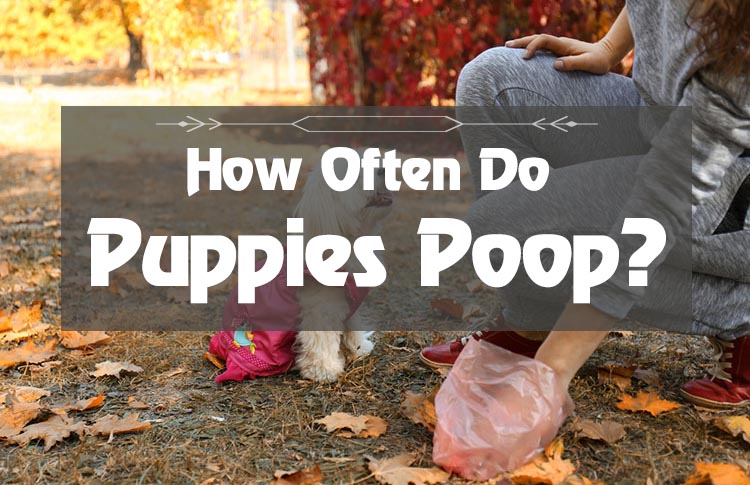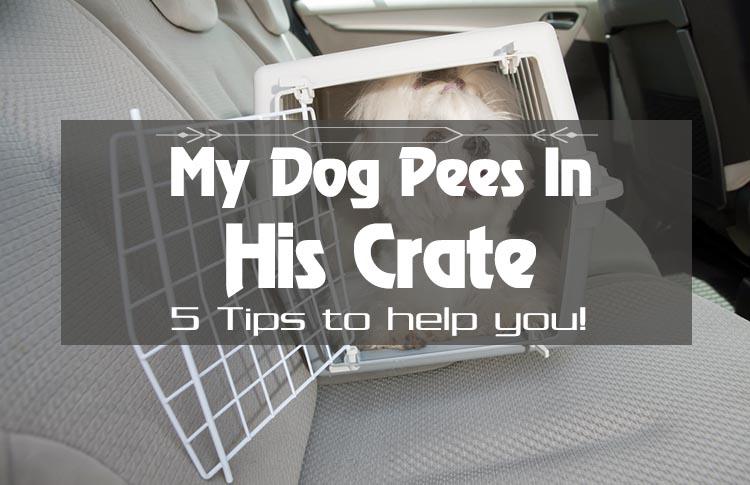My dog is having a Congestive Heart Failure… when do I put my dog down?When it comes to Congestive Heart Failures, it all depends on the number of factors that you may observe when it is happening. Truly, it is very painful for us to see our beloved dogs in pain. It is much more painful when we come across the thought of having to put them down.Having to know when to put them down is a matter of observation. Always consult your dog’s veterinarian whenever you think it might be time to do so. By then, you will know when to put them down.
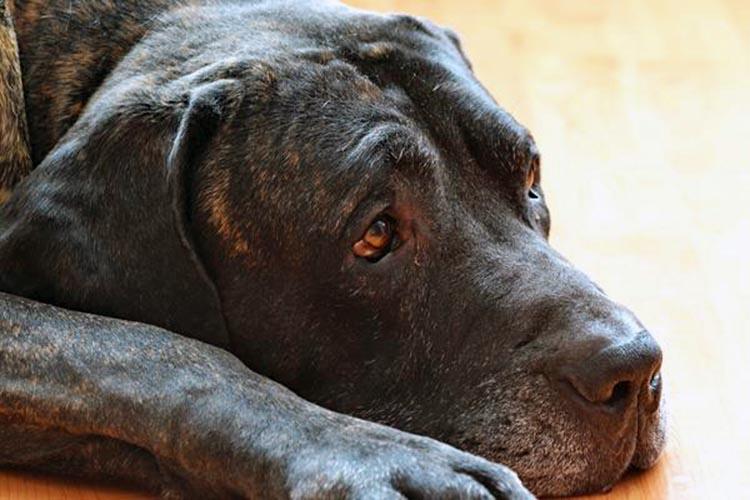
What is Congestive Heart Failure in Dogs and its Causes?
What is a Congestive Heart Failure in Dogs?
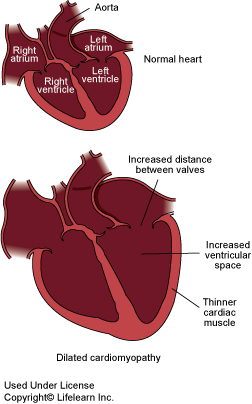
To start off, a Congestive Heart Failure in Dogs is a condition in which the dog’s heart is having problems pumping blood. When it happens, the required blood we need to be pumped every day won’t be met which can result to increase of pressure and fluids that may leak out in the lungs or everywhere in their body.
It sounds quite terrible, I know. Because of this heart disease, your dog’s respiratory system won’t be functioning normally as it should. Hindering of the normal lung expansion may occur as well us oxygen having trouble finding its way to your dog’s blood stream.
What causes Congestive Heart Failure in Dogs?
Well, there are actually lots of possible causes to why your dog may be having a Congestive Heart Failure. But the most common cause of this heart disease is through genetics. It could be that your dog has a family tree or history of older dogs having the same thing.
However, other possible causes can be that your dog is already very old and this can trigger a heart problem. It could also be that your dog might have gotten into a big something that caused this problem such as activity injuries.
Another factor would be the lack of exercise and the wrong diet. Sometimes, in order for us to stay healthy without any physical problems, we all have to make sure we are eating the right foods and doing enough exercise to avoid these. This could be the cause to why your dog has a Congestive Heart Failure.
What are the stages of congestive heart failure in dogs?
Understanding the stages of congestive heart failure (CHF) in dogs is crucial for pet owners to recognize the signs and seek appropriate veterinary care. CHF refers to a progressive condition where the heart struggles to pump blood effectively. There are several stages of congestive heart failure:
Stage 1: Preclinical or Silent Stage
During this initial stage, dogs may not exhibit any outward symptoms. However, underlying cardiac changes can be detected through diagnostic tests like echocardiography. Early detection allows for timely intervention and management.
Stage 2: Mild Heart Failure
In this stage, dogs may start displaying mild symptoms such as exercise intolerance, fatigue, or occasional coughing. Pet owners might observe subtle changes in their dog’s behavior or activity levels.
Stage 3: Moderate Heart Failure
At this stage, dogs experience more pronounced symptoms, including persistent coughing, rapid breathing, and reduced tolerance for physical activity. They may exhibit restlessness, difficulty breathing while lying down, or a bluish tint to the gums and tongue due to reduced oxygenation. These dogs are typically treated.
Stage 4: Severe Heart Failure
This is the most critical stage of congestive heart failure in dogs. Symptoms become severe and life-threatening, and dogs may struggle to breathe even at rest. They may show signs of extreme lethargy, fainting, or collapsing. Urgent veterinary attention is required to stabilize the dog’s condition, and hospitalization may be necessary. Advanced treatment options, such as oxygen therapy and more potent medications, might be implemented.
Dog Congestive Heart Failure Symptoms
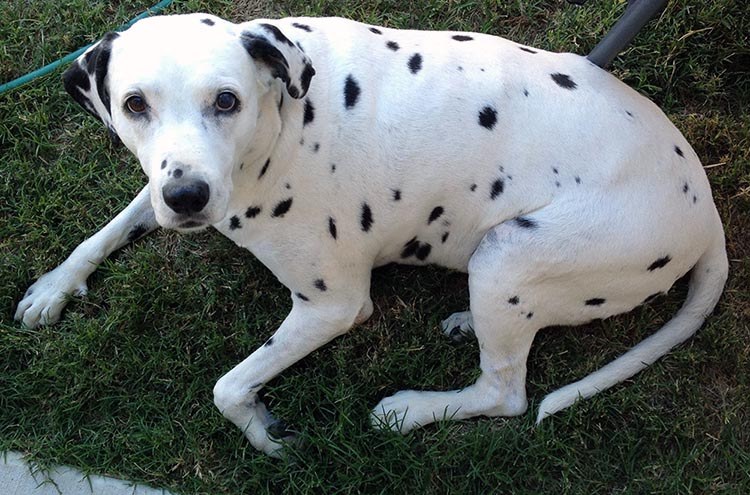
Maybe you are quite unsure whether your pet is experiencing Congestive Heart Failure or not. It could be something else. In order to know whether your pet really is having a heart disease, take a look at these symptoms that your pet may be experiencing when having the Congestive Heart Failure:
-
Coughing excessively
Pet patients with Congestive Heart Failure mostly experience excessive coughing which usually happens right after an exercise or before bed. This is because there is a fluid build-up happening in the dog’s lungs.
-
Difficulty in Breathing Properly
When your heart is not pumping enough blood and that oxygen is certainly having a hard time getting to the blood stream, breathing would be very difficult at times for your dog.
-
Fainting from time to time
Because of the fluid build-up as well as the lack of oxygen, your dog may faint right after an activity or at random times when their heart is not functioning properly at all.
-
Easily gets tired
Even if you have given your dog a moderate amount of exercises, they easily get tired and perhaps even dizzy. Fainting may come afterward or excessive coughing.
-
Weight Losses
Once your dog is suffering from a Congestive Heart Failure, they will certainly lose the ability to store fat in their bodies. Because of that, their weight may drop.
-
Difficulty in Settling Down to Sleep
Your dog may be trying to pace before sleeping, trying to breathe and relax, but having a heart disease like this doesn’t exactly give them that peaceful sleep or life.
What You Can Do to Treat It
Now, there may be some ways to treat your dog’s heart problem. Though it may cost you lots of money, time, tears, and patience. Once you have consulted a veterinarian, they may be able to do some things to help. What they can do are:
- Give medicine to your dog that helps the heart work better to correct any irregular pumping
- Give medicine to your dog that is able to slow down any fluid build-up in their lungs
- Giving your dog a heart surgery to fix any torn valve or to place a pacemaker to correct heartbeats
- Give your dog a prescription for low-salt dietary foods to aid in decreasing any fluid build-up in their lungs
- Give you the advice to limit and manage your dog’s exercises until progress has been made
- May give you helpful supplements such as vitamin B, taurine, Coenzyme Q, Vitamin E, and carnitine.
To make this work, you have to be consistent in dealing with your pet’s health. Always take the advice of a veterinarian.
Life Expectancy Of Dogs With Heart Failure On Medication
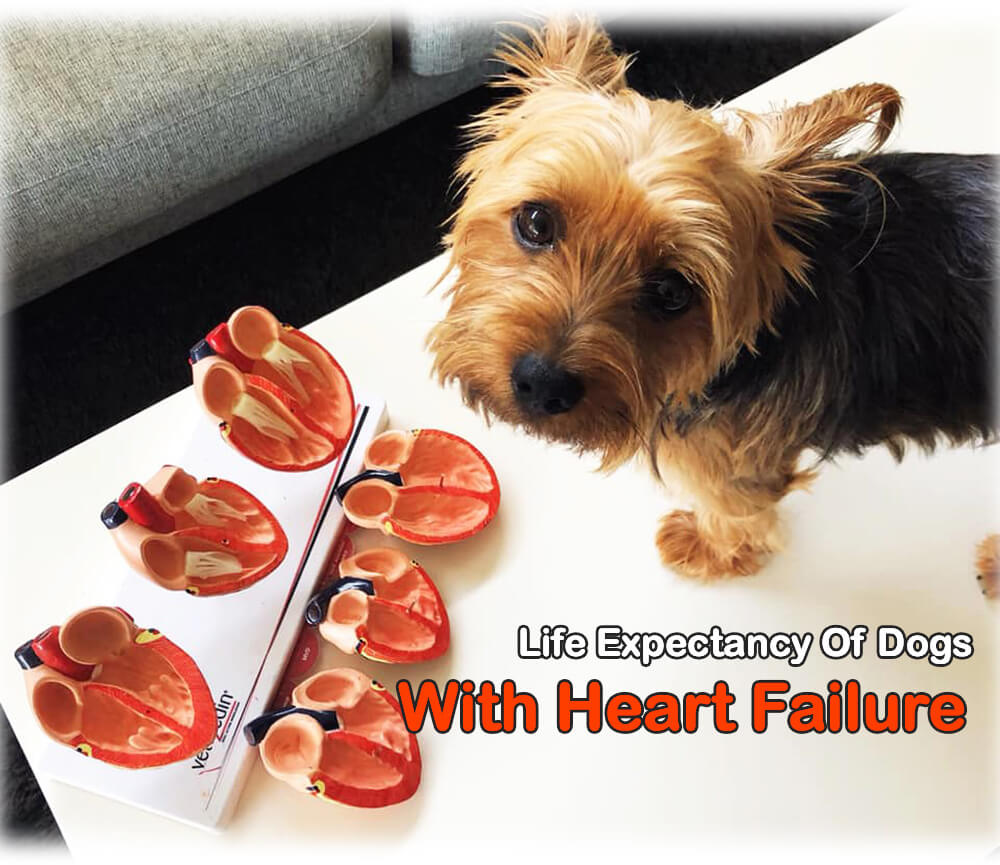
Fortunately, with proper treatment and medication, dogs can live for several months or even years after being diagnosed with heart failure. The life expectancy of dogs with heart failure on medication varies depending on the severity of their condition and how well they respond to treatment.
In general, dogs with mild to moderate heart failure can live for several years with the right combination of medication and lifestyle changes. However, more severe cases may only have a few months to a year left to live. It’s important for pet owners to work closely with their veterinarian and follow their recommendations for managing their dog’s condition.
While there is no cure for heart failure in dogs, many can still enjoy a good quality of life with proper care and management of their symptoms.
What to feed a dog with heart failure
Heart failure can cause a decrease in appetite, and it is important to provide a balanced diet that supports the dog’s overall health. A diet for dogs with heart failure should be low in sodium and high in protein.
High levels of sodium can increase fluid retention, which can put extra strain on the heart and lungs. A low sodium diet should contain less than 100mg of sodium per 100 calories of food. Avoiding processed foods, table scraps, and high-sodium treats.Instead, opt for fresh vegetables and fruits as treats or snacks. Lean proteins such as chicken or fish are also good options.
In dogs with heart failure, it is important to limit salt intake to prevent fluid buildup in the lungs and around the heart. Therefore, choosing lean protein sources without added salt is recommended. High-quality proteins contain all the essential amino acids necessary for optimal health. These include animal-based proteins such as chicken, beef, and fish. Additionally, feeding small meals throughout the day can help prevent excessive strain on the heart.
How to Know When it is Too Late to Save Them
When you have been trying, trying and trying to help save your pet from all the pain. There are just those times that it may not work anymore. Those times when it’s just too late. You may know how it’s too late once you have observed these factors from your pet…
- Symptoms are the same even after all the medication given
- Your pet is no longer actively moving around the house anymore
- Your pet is always in the exact same spot
- Suffering noises can be heard so much
- No progress has been observed after taking your veterinarian’s advice
- Your veterinarian sees that your dog can no longer take any more medication
- More painful symptoms have developed
Once you find anything within the list that matches up to your observation, then I’m sad to say that… it is time. It is time to put them down.
What actually happens during euthanasia, and does it hurt?
In fact, the vet will give your pets a shot. First it’s a sedative.Dr. Shea Cox, a caretaker of the Bridge’s health and mitigating the Bridge’s attention, “This creates a gentle transfer from consciousness and the only sensation that your pets will go through after this injection is to sleep. North California.
Cox said that this time would be 5 to ten minutes, when the animal fell into his sleep deep and deeper, “They’re no longer aware.”
When the family is ready, the veterinarian will proceed with the second shot. The most popular drug used in the phase is the pentobarbital, a different type of anesthetic that could cause the heart to slow and then stop.
Cox tells me, the injector is injected into the veins, which may lead to the death in a matter of seconds, or directly to the abdomen, may take 15 and be slowly and gently-slowly- but in both cases, you’ve got yourself, I’m not aware of this part of the process.
The only discomfort a pet has to go through during that time is that it can be needles in the first shot. Cox says that this is being kept with the true meaning of the word “euthanasia”, which comes from the word euthanatos in Greek, which means “good death.”
Useful Videos That May Help You Through the Process
“How to Know When it is Time”
“How to Say Goodbye to Your Pet”“How to Put Your Dog to Sleep”
My experience
After the veterinarian explained what would happen, she gave me a moment of privacy with the dog until I was ready. When I called the doctor back, I took a deep breath, prayed and we started.
The vet started injecting the veins of the dog’s foot and then wrangling me in a beautiful blanket. I can still see his little head coming out and look around the room. Although he’s always feeling anxious at the vet’s office, it’s strange, but it’s so calm today.
The doctor put the dog in my arms. I talked to him, caressed him, and I told him that I loved him and I kissed him. Then the doctor told me she was going to IV, and then she’d give her a shot to calm down and sleep easily. She explained that I would feel the whole body relaxed, and that’s what I did.
Even though I’m drowning, I know my puppy is not scared or miserable at all.After taking the sleeping pills, the doctor waited a bit and then she told me she would take sedation measures. It happened very quickly and all I can say is that it is very human. After it’s over, I have some alone time to sit and be with it.
My advice
Prepare and ask questions. Talk to your veterinarian and understand what’s about to happen.
Let’s make all your decisions first. Whether you want to bury or cremation, make all the important decisions before death. You’ll get too emotional when you have to solve that question afterwards.
Prepayment for all services. Then when you’re ready to leave, you don’t have to bother.
Make it easier with your furry baby if you can. Bring his favorite blanket, bed, or toy. Bring him a treat he’s always wanted, but was never allowed to have. so it will feel joyful and happy without us feeling sad.
Please give the best for your dog to feel happy and happy during this time .You should cry to feel more comfortable, don’t worry or be afraid because everyone understands your decision.
Don’t feel guilty. You’re making this decision because it’s in your fur baby’s best interest – if it weren’t for that then you wouldn’t have. And, remember, if it’s not in your furry baby’s best interest, neither will your vet.
Don’t forget the other dogs that are at your house. because they can be sad because they know a member is gone.
What Will Happen To My Dog Afterward?
You have many choices to do with your pet body after you die.
The vet can tell you about the foster care services that are already in your area. In general, you’ll have to determine if you want your pet to be cremated alone and their ashes will be returned to you.
You can buy countless pieces of ashes and special mementos to bear the ashes of your pets.
But before all of that, Many veterinarians will allow you to spend time alone with your dead pet who died in a room in their animal hospital if that’s where you were killed or in your home before the vet took their body.
Coping Strategies For Dealing With Pet Loss And Grief
Losing a pet is one of the most painful experiences one can go through. I can imagine because I have done it before. Coping with pet loss and grief is a process that takes time and effort. Some ways to deal with the pain include:
Finding someone to talk: Such as a friend, family member, or therapist. It’s important to allow oneself to grieve and not suppress emotions.
Engaging in activities that bring joy and distract from the pain: Such as exercising or volunteering at an animal shelter.
It’s important to remember that everyone grieves differently and there is no right or wrong way to cope with pet loss.
Moving Forward: Healing And Honoring The Memory Of Your Canine Companion
Losing a pet can be devastating, especially when it comes to making the difficult decision to put them down. After your dog has passed away, it’s important to give yourself time to grieve and process your emotions. One way to do this is by creating a memorial for your furry friend. You could plant a tree or create a garden in their honor, or even make a scrapbook filled with photos and memories.
Lastly, remember that it’s okay to take as much time as you need to heal. Everyone grieves differently, and there is no timeline for when you should feel “over” your loss.
FAQ about Congestive Heart Failure in Dogs
Can a dog with congestive heart failure be saved?
Yes, a dog with congestive heart failure can be managed and have their quality of life improved, but it cannot be completely cured. Veterinary care, medications, and lifestyle adjustments can help control the condition, alleviate symptoms, and extend the dog’s lifespan. However, the underlying heart disease causing the heart failure cannot be reversed, meaning the dog’s heart function will not return to normal. The focus is on providing comfort, managing symptoms, and slowing down the progression of the disease rather than a complete cure.
How to comfort a dog with congestive heart failure?
To comfort a dog with congestive heart failure, you can:+ Provide a calm and quiet environment to minimize stress and anxiety.+ Ensure your dog has a comfortable and cozy resting area.+ Offer a balanced diet recommended for dogs with heart conditions.+ Give your dog plenty of love, attention, and gentle physical contact.+ Engage in low-intensity activities, such as short, leisurely walks.+ Regularly consult with your veterinarian for check-ups and adjustments to the treatment plan.
Does congestive heart failure in dogs result in a painful death?
While congestive heart failure in dogs can cause discomfort and difficulty breathing, it is generally not considered a painful death. With appropriate treatment and management, dogs diagnosed with congestive heart failure can often maintain a good quality of life for a significant period of time.
My dog has congestive heart failure and will not eat. What can I do now?
If your dog has congestive heart failure and is not eating, it is essential to seek veterinary advice promptly. In the meantime, you can try the following:Offer a variety of appealing, nutritious, and easily digestible food options.Warm the food slightly to enhance its aroma and make it more enticing.Hand-feed small portions or try feeding smaller, frequent meals throughout the day.Ensure your dog has access to fresh water at all times.Address any underlying causes of decreased appetite, such as medication side effects or nausea.
Conclusion
Congestive Heart Failure is one of the scariest things that could ever happen to us or to someone we love. What is more worst is that it can happen quite unexpectedly or unknowingly. This is why we all must know the causes, symptoms and the possible treatments of this heart disease. It is also heavily advised that when it happens, you have to go to the vet immediately.

